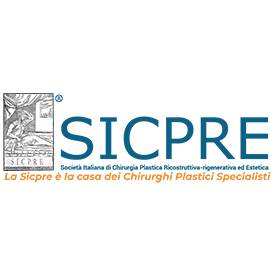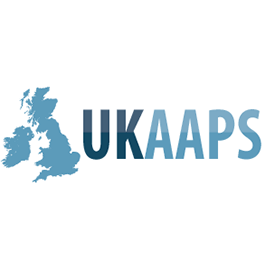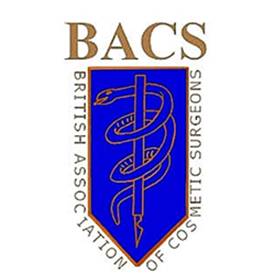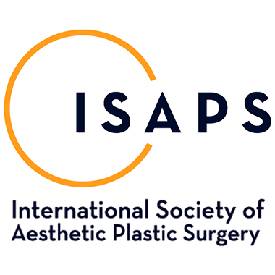Looking for open Rhinoplasty London? Dr. Frati is the celebrity specialist that can fulfil your desires, get in touch with our friendly team today!
What is Open Rhinoplasty?

Open rhinoplasty in London is a type of surgical Rhinoplasty technique used to reconstruct the nose in order to improve its appearance and/or function, in the UK’s capital city. During an open rhinoplasty in London, the surgeon will make incisions on both sides of the nostrils, as well as underneath the columella, which connects them. This allows for better access to the underlying nasal structures and more precise reshaping than traditional closed rhinoplasty techniques. The open rhinoplasty method is commonly used for more complex cases, such as those involving structural changes or difficult-to-reach areas of the nose. In this case, Dr Frati specialises in open rhinoplasty procedures due to his extensive experience with aesthetic and functional changes of facial anatomy.
The procedure can address a variety of cosmetic issues including: asymmetry; wide or bulbous tip; upturned or hooked nose; large nostrils; and decreased size or prominence of nasal features. It can also be used to repair nasal fractures, correct deviations that affect breathing, improve airflow and address other medical concerns related to the external structure of the nose.
Visit our main Rhinoplasty page or take a look at some Nose Job Before and after pictures.
Interested to know more about what Dr. Frati can do for you?
Open Rhinoplasty London With Dr. Frati
If you’re considering an open rhinoplasty in London, Dr. Frati is the best choice for your procedure. With decades of experience in rhinoplasty and other facial surgery, he has earned a five-star reputation from patients and industry experts alike. As a leader in his field, Dr. Frati has developed cutting-edge techniques which provide exceptional results for every patient. He is also known as ‘The Surgeon to the Stars’, trusted by celebrities and influencers alike to work on their noses.
With two offices located in London and Manchester UK, you can be sure to have access to the best treatment available no matter where you live. Whether you’re looking for reconstructive or cosmetic surgery, or simply wanting to improve your breathing ability or aesthetic appearance, Dr. Frati is dedicated to making sure that each patient receives tailored care and stunning results.
Get In Touch For Our Open Rhinoplasty London and Manchester Service
If you wish to learn more about what is rhinoplasty, our Open Rhinoplasty cost, services and knowledge in London or Manchester, and how we can help with your financial and aesthetic needs, please get in touch with us today by submitting an online enquiry form or by contacting our office directly during business hours.
If you require our Rhinoplasty London Service call 020 3633 2619
If you require our Rhinoplasty Manchester Service call 0161 327 2139
We look forward to helping you reach your desired aesthetic looks!
Open Rhinoplasty vs. Closed Rhinoplasty
When it comes to addressing the shape and size of your nose, there are two main options – open rhinoplasty and closed rhinoplasty. Both surgeries can produce great results depending on the individual’s goals, but they have their own distinct advantages and disadvantages.
Open rhinoplasty is a type of cosmetic surgery that allows your surgeon to achieve more precise changes in the shape of your nose through a small incision made at the base of your columella – the strip of tissue separating the nostrils. Open rhinoplasty gives your surgeon access to view and reshape both external and internal structures within the nasal area. This enables them to effectively address issues such as widening or narrowing the bridge, refining bumps, eliminating asymmetries or reshaping nasal tips.
On the other hand, closed rhinoplasty addresses similar concerns while being less invasive. It is best suited for minor adjustments and typically involves making small incisions inside each nostril which allow access to reshape tissues without leaving any visible scarring. The procedure is quicker than open rhinoplasty with less downtime needed afterwards, however it does limit how much change can be achieved due to limited visibility, making it ideal for minor corrections only.
In order to decide which procedure will give you better results when considering open rhinoplasty vs closed rhinoplasty, it’s important to discuss your needs with a qualified plastic surgeon who can assess your individual situation in detail and recommend what’s appropriate for you. Open rhinoplasty offers more control over aesthetic outcomes as well as greater accuracy for complex cases, but requires slightly longer recovery time due to its more invasive nature compared with closed rhinoplasty. Ultimately these factors should be weighed up carefully before committing to either option.


Open Rhinoplasty Step by Step Guide
For a basic guide to open rhinoplasty step by step, then follow this guide below. This is a general description and each procedure individual to your needs.
Anaesthesia: Open Rhinoplasty is mostly conducted under general anaesthesia.
Incision: The surgeon makes incisions either within the nostrils or along the columella to access underlying cartilage.
Reshaping the Bones: Depending on the desired outcome, the surgeon employs various techniques to modify the bone structure of the nose. This could involve repositioning or resetting the nose by breaking it, or the use of small grafts to add or remove bone.
Reshaping the Cartilage: The cartilage, which offers structural support to the nose, may also be reshaped. This can involve removing cartilage, or again, introducing grafts to specific areas.
Closure of Incisions: Incisions are closed using sutures or surgical tape.
Placement of Splint: A splint can be fixed to the exterior of the nose for preservation of the new shape and to safeguard it during healing.
Recovery: After the open rhinoplasty procedure, patients will require a recovery period for several weeks. Swelling and bruising will regress, and the results will become apparent after a few months.
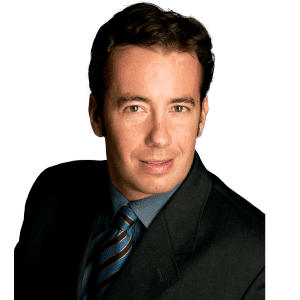
Dr Frati Cosmetic Surgery was established by internationally renowned surgeon to the stars Dr Riccardo Frati. Dr. Frati has featured on ITV’s This Morning, GMTV, featured in The Times, The Daily Mail, The Independent, The Daily Star, The Sun, FHM and 10 Years Younger; with countless mentions in celebrity magazines, online magazines and makeover reveals.
What are reasons to Get Open Rhinoplasty London?
Open rhinoplasty is a surgical procedure in which an incision is made across the columella (the strip of skin and cartilage separating the nostrils) to access and reshape the nasal structures. Common reasons individuals choose open rhinoplasty in London include:
- Correction of Nasal Deformities: Open rhinoplasty is often preferred when addressing complex or severe nasal deformities, such as a crooked nose, significant asymmetry, or extensive structural issues.
- Desire for Precise Changes: The open approach provides greater visibility and access to the nasal structures, making it suitable for patients seeking precise and detailed alterations to their nose, such as refining the nasal tip or correcting minor imperfections.
- Revision Rhinoplasty: Patients who have previously undergone rhinoplasty and require corrective surgery may benefit from open rhinoplasty to address issues like asymmetry, breathing difficulties, or aesthetic concerns.
- Structural Changes: Open rhinoplasty is chosen when substantial changes to the nasal framework are needed, such as addressing a deviated septum, reducing or augmenting the nasal dorsum, or adjusting the nasal tip shape.
- Complex Cases: Surgeons may recommend open rhinoplasty for complex cases that require a more comprehensive and methodical approach to achieve the desired results.
- Improved Visualisation: The open technique provides better visibility for the surgeon, which can be particularly beneficial when making intricate adjustments and fine-tuning the nasal structure.
- Severe Breathing Difficulties: Open rhinoplasty is sometimes necessary to correct severe breathing difficulties caused by a deviated septum or other structural issues within the nose.
- Customisation: The open approach allows for greater customization of the surgical plan, making it a suitable choice for those who seek highly individualised results.
- Assessment of Nasal Cartilage: The open technique allows for a more detailed evaluation of the nasal cartilage and its positioning, enabling surgeons to make precise changes that improve both form and function.
It’s important to consult with a qualified plastic surgeon in London to determine if open rhinoplasty in London is the best option for your specific needs and goals. The choice between open and closed rhinoplasty depends on the complexity of your case and the desired outcomes. Dr. Frati can provide recommendations based on a thorough evaluation of your nasal anatomy and concerns.
Is Open Rhinoplasty London for me?
Determining if open rhinoplasty in London is right for you is a decision that should be made after careful consideration and consultation with a qualified plastic surgeon such as Dr. Frati. Here are some factors to contemplate when deciding if open rhinoplasty in London is the suitable choice for your specific needs:
- Complexity of the Procedure: Open rhinoplasty in London is often recommended for complex cases or when extensive changes are required. If you have intricate structural issues, severe deformities, or you’re seeking highly customised results, open rhinoplasty may be a better fit.
- Previous Rhinoplasty: If you’ve had a previous rhinoplasty that resulted in complications, dissatisfaction, or the need for revision, London open rhinoplasty may be necessary to address these issues effectively.
- Specific Aesthetic Goals: If you have very specific aesthetic goals, such as precise changes to the nasal tip, increased visibility in the surgical process can help achieve these goals more accurately.
- Structural Concerns: Open Rhinoplasty London is often recommended when there are structural concerns, such as a deviated septum, nasal valve collapse, or significant asymmetry that needs correction.
- Desire for Detailed Evaluation: Open Rhinoplasty London allows for a more detailed assessment of the nasal anatomy, which can be valuable if you have complex nasal issues.
- Surgeon’s Recommendation: Your surgeon’s expertise and recommendation play a crucial role. A qualified surgeon such as Dr. Frati will evaluate your individual case and guide you in selecting the most appropriate technique to achieve your goals.
- Recovery Expectations: Be prepared for a potentially slightly longer recovery period and some minor scarring with open rhinoplasty in London. Ensure you are willing to accept these aspects in pursuit of your desired results.
It’s essential to consult with Dr. Frati in London, of whom specialises in rhinoplasty. During the consultation, you can discuss your goals, preferences, and any concerns you may have. Dr. Frati will perform a thorough assessment of your nasal anatomy and recommend the most suitable approach, whether it’s open rhinoplasty or another technique. Dr. Frati will provide you with information, answer your questions, and help you make an informed decision based on your unique case and objectives.
Book your FREE Consultation today!
Why choose a Specialist Surgeon for my Open Rhinoplasty in London?
Choosing a specialist surgeon like Dr. Frati for your open rhinoplasty in London is crucial for several compelling reasons:
- Expertise in Rhinoplasty: Specialist open rhinoplasty surgeons in London who focus on rhinoplasty have extensive training and experience in nasal surgery. They are well-versed in the nuances of this complex procedure, making them highly skilled in achieving the best possible outcomes.
- In-Depth Knowledge: Rhinoplasty specialists like Dr. Frati possess in-depth knowledge of nasal anatomy and function. This expertise allows them to make precise and effective adjustments to achieve both aesthetic and functional goals.
- Customised Care: Specialists can provide personalised recommendations based on your unique nasal structure and your desired outcomes. They tailor the surgical plan to your specific needs, ensuring the most appropriate approach.
- Aesthetic Artistry: Open Rhinoplasty London specialists such as Dr. Frati have a keen sense of aesthetics and understand the importance of maintaining facial harmony. They aim to create natural-looking results that complement your individual features.
- Reduced Risk of Complications: Due to their extensive experience, specialists are adept at minimising the risk of complications. They can address any issues that may arise during or after surgery with a high degree of competence.
- Access to Advanced Techniques: Rhinoplasty specialists often have access to the latest surgical techniques and technologies, ensuring that you benefit from the most up-to-date methods for achieving your goals.
- Comprehensive Pre- and Post-Operative Care: Specialists in London such as Dr. Frati typically offer thorough pre-operative assessments and post-operative care, including follow-up appointments to monitor your progress and address any concerns with your London open rhinoplasty.
- Consistent and Satisfactory Results: Open Rhinoplasty specialists may have a portfolio of consistently successful results. You can review before-and-after photos and patient testimonials to gauge the surgeon’s skill and artistry.
- Understanding of Function and Aesthetics: An Open Rhinoplasty London specialist recognises the importance of both form and function. They aim to improve the appearance of the nose while preserving or enhancing nasal function, ensuring that you breathe comfortably after surgery.
- Patient-Centred Approach: Specialists prioritise open communication, active listening, and a patient-centred approach. They take the time to understand your goals, address your concerns, and collaborate with you to achieve the desired outcomes.
When considering open rhinoplasty in London, choosing a specialist surgeon like Dr. Frati ensures that you receive the highest level of care and expertise in a field that demands precision and artistry. It significantly enhances the likelihood of a successful and satisfying open Rhinoplasty London experience.
Your Open Rhinoplasty London Consultation
Dr. Frati dedicates time to thoroughly comprehend your objectives for the surgery. Together, you and Dr. Frati will collaborate to establish the ideal nasal aesthetics that complement your overall facial harmony. To facilitate this, advanced 3D imaging may be employed. Additionally, Dr. Frati will conduct a comprehensive evaluation of your medical history, any prior surgeries, your general well-being, allergies, and your current medication regimen, if relevant.
Rhinoplasty related questions which Dr Frati may ask you
Do you have any medical conditions like diabetes or hypertension?
Are you in good overall health without chronic medical conditions?
Are you currently taking any medications, and do you have any known allergies?
Have you undergone any prior surgeries, and were there any complications?
What are your desired outcomes for the rhinoplasty procedure?
Do you engage in smoking or alcohol consumption, and if so, to what extent?
Leveraging his extensive expertise, Dr. Frati will provide recommendations for the most suitable procedure or a combination of procedures to attain your desired outcomes. He will also furnish a comprehensive explanation of potential risks and complications. If you wish, you have the option to request a compilation of before-and-after rhinoplasty images, which can offer an initial glimpse into the potential outcomes of your surgical journey. It’s crucial to view these images as informative references, as they do not guarantee an exact replication of a specific surgical result.
Rhinoplasty related you may want to ask Dr. Frati
How can I determine if a rhinoplasty is a suitable option for me?
Which technique is preferable: the open or closed approach?
If I’m not a candidate for a surgical procedure, should I consider a non-surgical rhinoplasty?
Is there a significant amount of post-procedure pain to anticipate?
What level of scarring is typical after the procedure?
Could you describe the recovery process and offer guidance for achieving optimal results during the healing period?
Am I maintaining realistic expectations regarding the desired outcomes?
Given my specific concerns, how many similar procedures have you performed in the past?
May I review before-and-after rhinoplasty images that are similar to my case?
What should I do if the results fall short of my expectations?
In approximately 25% of consultations, Dr. Frati may advise against pursuing an open rhinoplasty procedure. This underscores the commitment to ethical principles and professionalism maintained by all surgeons at Dr. Frati Cosmetic Surgery. Our primary dedication is to healthcare, and our clinical judgments are made without any commercial interests.
The fundamental purpose of the consultation is to empower every patient with the knowledge and insight needed to make well-informed and considerate choices regarding the potential for a rhinoplasty procedure. Dr. Frati’s role is to facilitate this decision-making process, turning the consultation into a collaborative interaction between two experts: yourself and Dr. Frati.
Open Rhinoplasty London FAQs
How much is Rhinoplasty?
Depending on many factors such as open or closed rhinoplasty's and also the bespoke requirements of each patient, you can expect rhinoplasty costs to start at £8,000 for closed and £10,300 for open rhinoplasty.
Is Rhinoplasty Surgery risky?
Every surgery is risky, period. There is always a risk of a reaction to anaesthesia for example, or internal bleeding, even infection of the operated area - unfortunately this is the nature of surgery. However, Dr. Frati is one of the best qualified surgeons in the UK and with this comes the mineralisation of risk, something to really take into account when choosing your surgeon.
How long does it take to recover from Rhinoplasty?
Whilst we would recommend to take around 2 weeks off work for recovery, it may take up to 6 months for swelling to completely disappear.
How long does Rhinoplasty surgery take?
Normally, Rhinoplasty surgery takes around 2-3 hours to complete
What's the difference between Male and Female Rhinoplasty?
Rhinoplasty is a widely performed cosmetic surgery procedure for both women and men. Notably, in the UK, it stands as the most frequently sought-after cosmetic surgery among men.
This procedure incorporates recognised surgical techniques suitable for both men and women, although gender differences in nasal structure yield distinct treatment goals. These structural distinctions often lead to different objectives for each gender.
Patients opt for rhinoplasty for various reasons, including addressing functional issues like breathing difficulties, enhancing the nose's aesthetics in harmony with their facial features, boosting self-confidence, and rectifying facial asymmetry. Common nasal irregularities include dorsal humps, bulbous or boxy tips, septal deviations, droopy nasal tips, narrow or wide noses, and noses deviated due to injury. The rhinoplasty surgeon's primary role is to identify the distinguishing features between male and female noses and devise surgical strategies to correct these abnormalities.
In men, rhinoplasty frequently involves achieving a straighter angle, enhancing definition, and reducing bulbous features. This results in a more pronounced appearance that complements the overall facial aesthetics. Many men also seek rhinoplasty to correct nose deviations from past injuries or to smooth out localised irregularities.
Conversely, women often opt for more subtle, less conspicuous changes to maintain facial balance. A commonly requested procedure is to reduce the appearance of a droopy nasal tip, often associated with a dorsal hump. Our surgeons, for both men and women, are skilled in addressing individual nasal concerns that hold personal significance. Typically, men seek a more chiseled or defined nose without excessive narrowing that could create a pinched nasal tip. The art of rhinoplasty surgery lies in tailoring each procedure to the patient's unique anatomy to help them achieve their objectives.
In many instances, there are marked differences in nasal structure between men and women. Women often have shorter noses and thinner skin, while many men possess thicker, more sebaceous skin. This thicker skin can lead to a larger, bulbous nasal tip, a feature more common in men and sometimes associated with a condition called rhinophyma.
The global COVID-19 pandemic has resulted in a surge of video conferencing, making many men more self-conscious about their appearance during these virtual interactions. Rhinoplasty distinguishes itself from other cosmetic surgeries by not only enhancing aesthetics but also improving the nose's functionality to restore overall facial balance. Patients, particularly men, who undergo rhinoplasty often report heightened self-confidence, leading to increased comfort in their appearance during video calls.
Male nose job surgery can be combined with other facial procedures, with the most prevalent combination being chin augmentation using an implant to achieve a more defined and stronger chin profile in addition to rhinoplasty.
As one of the UK's most reputable private rhinoplasty units, Dr. Frati is proficient in a range of rhinoplasty techniques, including open rhinoplasty, closed rhinoplasty, septo-rhinoplasty, rhino tip surgery, ultrasonic rhinoplasty, and revision rhinoplasty.
How do I prepare for Rhinoplasty?
Preparation for rhinoplasty, involves several crucial measures to facilitate a smooth surgery and a comfortable, speedy recovery. Here are key steps that patients should take in readiness for rhinoplasty:
- Consultation with a Qualified Plastic Surgeon: It's essential to consult with a seasoned plastic surgeon experienced in rhinoplasty, such as Dr. Frati. The surgeon will assess the patient's unique case, discuss their surgery objectives, and provide a comprehensive overview of the procedure, including potential risks and complications.
- Medical Evaluation: Patients must undergo a medical evaluation to ensure they are in good health and eligible for safe surgery. Dr. Frati will review your medical history, conduct a physical examination, and order any necessary lab tests.
- Smoking Cessation and Medication Review: Smoking can impede the healing process, so patients should quit smoking at least six weeks before the surgery. Additionally, certain medications, such as aspirin and non-steroidal anti-inflammatory drugs (NSAIDs), should be avoided, as they can elevate the risk of bleeding.
- Arrange Post-Operative Care: You should make arrangements for post-operative care, including transportation home after the surgery and having someone to stay with them for the initial few days to assist with tasks like bathing and dressing.
- Adherence to Pre-Operative Instructions: Dr. Frati will furnish the patient with detailed pre-operative instructions, covering dietary and beverage guidelines, pre-surgery preparation, and post-surgery wound care. Adhering closely to these instructions is crucial for a smooth recovery.
- Understanding the Recovery Process: The recovery following rhinoplasty can span several weeks. You should familiarise yourself with what to expect during this phase and plan accordingly. Swelling and bruising are normal post-surgery effects, and activities such as sports, heavy lifting, and exercise should be avoided for at least two weeks.
- Realistic Expectations: It is paramount for patients to harbour realistic expectations regarding the surgery's outcomes. It is important to comprehend that the final results will only become visible once the swelling has entirely subsided.
By following these steps, you can effectively prepare for rhinoplasty, ensuring a smooth surgical experience with Dr. Frati and a comfortable, expedited recovery.
What scars will I have after Rhinoplasty?
The type and location of scars resulting from a nose job (rhinoplasty) are contingent on the specific technique employed by Dr. Frati. In an "open" rhinoplasty, an incision is made across the columella (the skin between the nostrils), enabling the surgeon to lift the skin from the underlying nasal structures. This grants access to the underlying cartilage and bone for necessary adjustments. In a "closed" rhinoplasty, all incisions are internal, minimising visible scarring. Nevertheless, the chosen technique will also consider individual cases, patient requirements, and Dr. Frati's preference.
Following the surgery, incisions are closed with sutures, and the healing process spans several weeks to months. Once healing is complete, most scars are concealed within the natural creases of the nose, making them inconspicuous. Nonetheless, it's important to bear in mind that the final results of the surgery may not be immediately apparent. It may take several months for swelling to subside and for the definitive shape of the nose to emerge.
It's essential to acknowledge that scarring is an inherent component of any surgical procedure. While all possible efforts are made to minimise scarring, there is no absolute guarantee that scars will remain entirely imperceptible. Therefore, it is crucial to discuss potential scarring with Dr. Frati before opting for the surgery.
Other Types of Rhinoplasty
Open Rhinoplasty
Open rhinoplasty is a surgical technique used for nasal reshaping (rhinoplasty) in which the surgeon makes an incision on the external skin of the nose, usually along the columella, which is the narrow strip of tissue that separates the nostrils. This approach is also known as the "external" or "open structure" rhinoplasty technique. It is distinguished from closed rhinoplasty, where all incisions are made inside the nostrils, resulting in no external scars.
A quick summary of how Open Rhinoplasty Works
Incision: In an open rhinoplasty, the surgeon creates a small incision on the columella, the fleshy strip of skin and tissue that separates the nostrils. This external incision allows the surgeon better visibility and access to the internal structures of the nose.
Visualisation: By lifting the nasal skin and tissue, the surgeon gains a direct and clear view of the nasal cartilage and bone. This enhanced visibility is particularly useful for complex or detailed nasal surgeries.
Surgical Precision: The open rhinoplasty approach offers greater control and precision in reshaping the nasal structures, making it well-suited for cases where extensive changes or reconstructions are required.
Suture Closure: After the necessary alterations have been made to the nasal framework, the surgeon meticulously closes the external incision with fine sutures. Over time, the scar on the columella usually becomes quite inconspicuous and often fades significantly.
Open rhinoplasty is typically chosen in the following situations:
- Complex or revision rhinoplasty: When significant structural changes are needed or when the patient has undergone prior nasal surgery.
- Cases requiring precise control: Surgeons may prefer the open approach for intricate refinements, such as tip work or graft placement.
- Improved visibility: Surgeons may opt for open rhinoplasty to achieve a better view of the nasal anatomy, making it easier to address specific concerns.
It's essential to consult with a board-certified plastic surgeon such as Dr. Frati to determine the most appropriate rhinoplasty technique for your unique goals and needs. Dr. Frati can consider your nasal anatomy, aesthetic objectives, and any prior surgeries to recommend the best approach for you.
Closed Rhinoplasty
Closed rhinoplasty, also known as endonasal rhinoplasty or scarless rhinoplasty, is a surgical technique used for nasal reshaping (rhinoplasty) in which all the incisions are made inside the nostrils. Unlike open rhinoplasty, which involves an external incision on the columella (the strip of tissue that separates the nostrils), closed rhinoplasty is performed entirely through the nostrils. This approach is known for leaving no external scars.
Here's an overview of closed rhinoplasty:
Internal Incisions: In closed rhinoplasty, the surgeon makes incisions on the inside of the nose, typically within the nostrils. These incisions provide access to the nasal structures that need to be modified or reshaped.
Limited Visibility: Since the surgeon works through small internal incisions, the visibility of the nasal anatomy is somewhat limited compared to open rhinoplasty. However, skilled surgeons are experienced in working within these constraints.
Tissue Manipulation: The surgeon can access and manipulate the nasal bones, cartilage, and soft tissues to achieve the desired changes to the nose's shape, size, and structure.
Suture Closure: After making the necessary modifications, the surgeon closes the internal incisions with sutures. Since there are no external incisions, there are no visible external scars.
Closed rhinoplasty is commonly chosen in the following situations:
- Minor to moderate nasal reshaping: When the desired changes to the nose are relatively straightforward and don't require extensive exposure or structural alterations.
- Patients concerned about visible scarring: Closed rhinoplasty is often recommended for individuals who want to minimize the risk of external scarring, as there are no visible scars on the outside of the nose.
- Faster recovery: Some patients may experience a quicker recovery with closed rhinoplasty due to the absence of external incisions.
The choice between closed and open rhinoplasty depends on various factors, including the complexity of the procedure, the surgeon's preference and expertise, and the patient's specific goals and anatomy. A consultation with Dr. Frati is essential to determine the most suitable rhinoplasty approach for an individual's needs.
Tip Rhinoplasty
Tip rhinoplasty, also known as nasal tip surgery, is a specific type of rhinoplasty procedure that focuses primarily on altering and refining the shape, size, and appearance of the nasal tip. Unlike a full rhinoplasty, which can involve changes to the entire nose, tip rhinoplasty targets the lower portion of the nose, specifically the nasal tip and the surrounding structures.
Some common goals of tip rhinoplasty include:
Nasal Tip Refinement: Tip rhinoplasty is often performed to refine and reshape a bulbous or wide nasal tip. Surgeons can sculpt the tip to make it more defined and proportionate to the rest of the nose and face.
Nasal Tip Projection: Some individuals have a nasal tip that is too flat or lacks projection. Tip rhinoplasty can be used to increase the projection of the tip, giving it a more prominent appearance.
Tip Rotation: The angle at which the nasal tip points can be adjusted during tip rhinoplasty. Surgeons can rotate the tip upward (upward rotation) or downward (downward rotation) to achieve the desired aesthetic.
Nostril Size and Shape: In some cases, tip rhinoplasty may also involve adjustments to the size and shape of the nostrils, particularly if they are asymmetrical or flared.
Correction of Minor Irregularities: Tip rhinoplasty can address minor irregularities or asymmetries in the nasal tip, such as cartilage asymmetry or unevenness.
It's important to note that tip rhinoplasty is a more focused and less invasive procedure compared to a full rhinoplasty. It is often chosen by individuals who are generally satisfied with the appearance of the upper part of their nose but seek specific improvements in the tip region. As with any cosmetic surgery, it's crucial to consult with a board-certified plastic surgeon such as Dr. Frati for your specific needs.
Alarplasty
Alarplasty, also known as alar base reduction or nostril reduction surgery, is a cosmetic surgical procedure that focuses on altering the size and shape of the nostrils. This procedure is often performed to address concerns related to the width or flaring of the nostrils, helping to achieve better facial harmony and balance.
Here's an overview of alarplasty:
Nostril Reduction: Alarplasty specifically targets the alar base, which is the area where the nostrils meet the cheeks. It involves the surgical modification of the nostrils to reduce their width or flare.
Incisions: Typically, small incisions are made at the junction between the nostrils and the cheeks, near the outer edges of the nostrils. The precise location and size of these incisions can vary depending on the individual's anatomy and the desired outcome.
Tissue Removal: The surgeon may remove a wedge-shaped piece of tissue from the base of the nostrils to narrow them. This tissue removal is carefully planned to ensure that the nostrils maintain a natural and symmetrical appearance.
Suture Closure: After the necessary tissue adjustments are made, the surgeon closes the incisions with sutures. These sutures are usually absorbable and do not need to be removed.
Alarplasty is typically performed for the following reasons:
- Wide or Flaring Nostrils: Individuals with wide or flaring nostrils may seek alarplasty to achieve a more proportionate and balanced appearance.
- Facial Harmony: Alarplasty can help enhance facial harmony by reducing the prominence of the nostrils, making them more in line with other facial features.
- Ethnic Rhinoplasty: Alarplasty is sometimes part of ethnic rhinoplasty procedures, as people from different ethnic backgrounds may have specific aesthetic concerns related to the shape and width of their nostrils.
Alarplasty is considered a relatively straightforward and minimally invasive procedure when compared to more extensive rhinoplasty surgeries. However, it is still a surgical procedure that should be performed by a board-certified plastic surgeon such as Dr. Frati. Dr. Frati will work closely with the patient to determine the desired outcome and create a treatment plan tailored to their specific goals.
Septoplasty
Septoplasty is a surgical procedure performed to correct a deviated septum, a condition in which the nasal septum (the thin wall of cartilage and bone that separates the two nasal passages) is crooked or displaced, causing obstruction or blockage in one or both nostrils. This obstruction can lead to various nasal and breathing problems.
Here's an overview of septoplasty:
Diagnosis: Before septoplasty, a patient typically undergoes a thorough evaluation by an ear, nose, and throat (ENT) specialist or a rhinologist. This evaluation may include a physical examination, nasal endoscopy, and sometimes imaging studies like a CT scan to assess the extent and location of the septal deviation.
Surgical Procedure: Septoplasty is performed under local or general anesthesia, depending on the patient's and surgeon's preferences. During the procedure, the surgeon makes an incision inside the nostril to access the deviated septum.
Straightening the Septum: The surgeon carefully lifts the mucosal lining covering the septum and then reshapes or repositions the deviated septum, often by trimming, removing, or repositioning the cartilage and bone. The goal is to create a straighter, more symmetrical nasal septum that allows for improved airflow through the nasal passages.
Closing the Incision: After the necessary adjustments are made to the septum, the surgeon closes the incision with dissolvable sutures or other closure techniques. No external incisions or visible scars are typically associated with septoplasty since all the work is done inside the nostrils.
Septoplasty is primarily performed to address functional issues related to a deviated septum, including:
- Nasal obstruction: Correcting a deviated septum can alleviate difficulty breathing through the nose, reduce nasal congestion, and improve airflow.
- Snoring and Sleep Apnea: In some cases, septoplasty can help reduce snoring and improve sleep apnea symptoms by opening the airway.
- Chronic Sinusitis: A deviated septum can contribute to chronic sinusitis. Septoplasty may be part of the treatment plan for individuals with recurrent sinus infections.
It's important to note that septoplasty is a medical procedure aimed at improving nasal function, and its primary goal is not cosmetic. However, some individuals may choose to combine septoplasty with cosmetic rhinoplasty to address both functional and aesthetic concerns simultaneously. Septoplasty is considered a relatively safe and effective procedure when performed by a skilled and experienced ENT surgeon or rhinologist. Recovery times can vary, but most patients can return to their normal activities within a week or two following surgery.
Septorhinoplasty
Septorhinoplasty is a surgical procedure that combines two distinct nasal surgeries: septoplasty and rhinoplasty. This combined procedure is performed to address both functional and cosmetic issues of the nose. Here's a breakdown of what each component entails:
Septoplasty: This part of the procedure focuses on correcting a deviated septum, which is the thin wall of cartilage and bone that separates the two nasal passages. A deviated septum can lead to breathing difficulties, nasal congestion, and other functional problems. During septoplasty, the surgeon makes internal incisions inside the nostrils, repositions or removes the deviated portions of the septum, and straightens it to improve nasal airflow and function.
Rhinoplasty: Rhinoplasty, often referred to as a "nose job," is a cosmetic surgery that focuses on altering the size, shape, or appearance of the nose to enhance its aesthetics. This component of septorhinoplasty allows patients to address concerns related to the external appearance of the nose. It can involve reshaping the nasal tip, reducing or augmenting the nasal bridge, refining the nostrils, or addressing other cosmetic issues.
Septorhinoplasty is typically chosen by individuals who have both functional and aesthetic concerns about their nose. Common reasons for undergoing septorhinoplasty include:
- Correcting breathing problems caused by a deviated septum while simultaneously improving the appearance of the nose.
- Enhancing facial harmony by addressing cosmetic issues such as a hump on the bridge of the nose, a bulbous nasal tip, or asymmetry.
- Addressing trauma-related injuries to the nose that have resulted in both functional and cosmetic deformities.
- Combining septoplasty with rhinoplasty allows for a more comprehensive approach to nasal surgery, ensuring that both functional and aesthetic goals are achieved in a single procedure.
Septorhinoplasty is a complex surgical procedure that requires the expertise of a skilled and experienced plastic surgeon such as Dr. Frati. The specific techniques used and the surgical plan will vary depending on the individual's unique anatomy and goals. Recovery times and post-operative care will also depend on the extent of the surgery and the patient's overall health. Patients considering septorhinoplasty should have a thorough consultation with Dr. Frati to discuss their concerns, expectations, and the potential benefits and risks of the combined procedure.
Preservation Rhinoplasty
Preservation rhinoplasty, also known as preservation or preservationist rhinoplasty, is an approach to nasal surgery that emphasizes maintaining and preserving the natural structures of the nose as much as possible while making subtle, conservative changes to improve its appearance. This technique stands in contrast to traditional or "reductive" rhinoplasty, where significant cartilage and bone removal may be involved to achieve the desired cosmetic changes.
Key features of preservation rhinoplasty include:
Minimal Tissue Removal: Preservation rhinoplasty involves minimal removal of cartilage and bone from the nose. Surgeons aim to retain as much of the patient's natural nasal anatomy as possible.
Respect for Nasal Function: This approach prioritises preserving nasal function and maintaining proper airflow through the nasal passages. Functional aspects of the nose, such as the nasal septum and other supporting structures, are carefully preserved.
Natural Results: Preservation rhinoplasty focuses on achieving results that look natural and harmonious with the patient's facial features. The goal is to create subtle and proportionate changes rather than dramatic alterations.
Reduced Risk of Complications: Since the procedure is less invasive and involves less tissue manipulation, there may be a reduced risk of complications, such as structural issues or breathing problems, that can occur in more extensive rhinoplasty procedures.
Shorter Recovery Time: Patients undergoing preservation rhinoplasty may experience a shorter recovery period compared to traditional rhinoplasty, as there may be less swelling and bruising.
Preservation rhinoplasty can be an attractive option for individuals who are primarily seeking subtle cosmetic enhancements to their nose without drastically altering their natural appearance or risking functional issues. It may also be suitable for those with concerns about the long-term structural integrity of their nose.
It's important to note that preservation rhinoplasty is not suitable for every patient or every desired outcome. The appropriateness of this approach depends on the patient's specific nasal anatomy, goals, and the expertise of the surgeon. Patients interested in preservation rhinoplasty should consult withDr. Frati to determine the most suitable approach for their individual needs and expectations.
Ultrasonic Rhinoplasty
Ultrasonic rhinoplasty is an advanced surgical technique that utilizes ultrasonic instruments, specifically ultrasonic bone-cutting devices, to perform precise and controlled bone reshaping during a rhinoplasty procedure. This technique has gained popularity in the field of cosmetic and reconstructive rhinoplasty because it offers several advantages over traditional methods of bone manipulation.
Here's how ultrasonic rhinoplasty works and its key features:
Ultrasonic Instruments: Ultrasonic rhinoplasty employs specialised ultrasonic instruments that emit high-frequency sound waves. These waves are used to cut, sculpt, and shape bone and cartilage in a controlled and precise manner.
Precise Bone Sculpting: Traditional rhinoplasty techniques often involve the use of chisels or osteotomes to reshape the nasal bones. Ultrasonic instruments allow for more accurate and fine-tuned bone sculpting, reducing the risk of fractures, irregularities, and complications.
Minimised Trauma: Ultrasonic rhinoplasty is considered less traumatic to the surrounding tissues compared to traditional methods. This can result in reduced post-operative swelling and bruising, potentially leading to a faster recovery and less discomfort for the patient.
Customised Results: Surgeons can achieve highly customised and precise results with ultrasonic rhinoplasty. The technique allows for intricate adjustments to the nasal bones, including dorsal hump reduction, narrowing of the nasal bridge, and other bone-related modifications.
Versatility: Ultrasonic rhinoplasty can be used in various types of rhinoplasty procedures, including primary (first-time) rhinoplasty, revision rhinoplasty, and ethnic rhinoplasty, to address a wide range of aesthetic and functional concerns.
Enhanced Safety: The precision of ultrasonic instruments minimises the risk of accidental damage to adjacent structures, such as the nasal septum or soft tissues, further enhancing the safety of the procedure.
Shorter Recovery: Some patients may experience a shorter recovery time with ultrasonic rhinoplasty due to reduced trauma to the tissues and less post-operative swelling.
It's important to note that ultrasonic rhinoplasty is a specialised technique that requires the surgeon to have specific training and experience with ultrasonic devices. Not all rhinoplasty surgeons may offer this option, so patients interested in ultrasonic rhinoplasty should seek out a consultation with Dr. Frati.
As with any surgical procedure, it's essential for patients to have a thorough consultation with Dr. Frati to discuss their goals, expectations, and the most suitable approach for their individual needs.
Ethnic Rhinoplasty
Ethnic rhinoplasty, also known as cultural or ethnic nose surgery, is a specialized branch of rhinoplasty that focuses on reshaping and enhancing the nose while taking into consideration the unique characteristics and aesthetic preferences of individuals from various ethnic backgrounds. The goal of ethnic rhinoplasty is to achieve a nose that is both harmonious with the individual's facial features and culturally appropriate.
Key features of ethnic rhinoplasty include:
Cultural Considerations: Ethnic rhinoplasty acknowledges that different ethnic groups have distinct nasal and facial characteristics. Surgeons work to preserve these ethnic features while addressing specific concerns or requests from the patient.
Customisation: Each ethnic group may have its own ideal of beauty and specific nasal traits that are considered desirable. Ethnic rhinoplasty aims to customise the procedure to achieve a result that aligns with the patient's cultural background and personal preferences.
Respect for Natural Beauty: Ethnic rhinoplasty does not seek to westernise or homogenise the appearance of the nose. Instead, it respects and enhances the patient's natural beauty while addressing any functional or aesthetic concerns.
Balancing Proportions: Surgeons performing ethnic rhinoplasty focus on achieving balance and harmony between the nose and other facial features. This often involves modifying the nasal bridge, tip, or nostrils to create a more proportional appearance.
Functional Improvements: In some cases, ethnic rhinoplasty may also involve addressing functional issues, such as a deviated septum or breathing difficulties, to improve the overall nasal function.
- Ethnic rhinoplasty is commonly sought by individuals who wish to refine or enhance the appearance of their nose while maintaining their cultural identity and unique features. Some examples of ethnic rhinoplasty goals for specific groups may include:
- African American Rhinoplasty: Addressing concerns related to a wide nasal base, a broad or flat nasal bridge, or nostril shape and size.
- Asian Rhinoplasty: Enhancing the nasal bridge, tip projection, or addressing issues related to a less defined nasal tip.
- Hispanic/Latino Rhinoplasty: Balancing proportions of the nasal bridge and tip while preserving natural ethnic features.
- Middle Eastern Rhinoplasty: Addressing concerns about nasal hump reduction, tip refinement, or nostril shape.
It's essential for individuals considering ethnic rhinoplasty to consult with Dr. Frati who has experience working with patients from diverse cultural backgrounds. A thorough consultation will help ensure that the surgical plan aligns with the patient's cultural preferences and aesthetic goals.
Open Rhinoplasty London Benefits
Open rhinoplasty in London offers several benefits for individuals seeking nasal surgery. Some of the advantages of open rhinoplasty include:
- Enhanced Visibility: The open technique provides the surgeon with better visibility and access to the nasal structures, allowing for precise adjustments and a more thorough evaluation of the nasal anatomy.
- Complex Corrections: Open Rhinoplasty London is particularly suitable for complex or intricate cases, where extensive structural changes are needed or when there are severe deformities.
- Detailed and Customised Outcomes: The improved visibility enables the surgeon to make highly detailed and customised alterations, which can be essential for achieving specific aesthetic goals or addressing complex structural issues.
- Revision Rhinoplasty: The open approach is often favored for revision rhinoplasty, as it allows the surgeon to correct previous surgical issues more effectively and achieve improved results.
- Functional Improvements: Open Rhinoplasty London is suitable for cases where both aesthetic and functional improvements are required, such as correcting a deviated septum or addressing breathing difficulties.
- Highly Individualised Results: The open technique allows for a tailored surgical plan that can address the unique needs and goals of each patient, ensuring a more individualised outcome.
- Surgeon’s Precision: Surgeons experienced in London open rhinoplasty have a better opportunity to exercise their skills and artistry to achieve highly refined and aesthetically pleasing results.
- Patient Satisfaction: Patients often report high levels of satisfaction with open rhinoplasty in London, as it can deliver the precise changes they desire, particularly when seeking a specific nose shape or tip refinement.
- Minimised Risk of Complications: Skilled surgeons in London who specialise in open rhinoplasty can minimise the risk of complications and address any issues that may arise during or after surgery.
It’s important to consult with a board-certified plastic surgeon in London such as Dr. Frati, who is experienced in both open and closed rhinoplasty techniques. The choice between closed and open rhinoplasty depends on the individual’s specific case and goals. Your surgeon can guide you in selecting the most suitable approach to achieve your desired outcomes.
Common concerns and goals of individuals seeking open rhinoplasty in London include:
Concerns:
- Nasal Aesthetics: Many individuals are concerned about the appearance of their nose, which may include issues such as a nasal hump, wide or bulbous nasal tip, crooked or asymmetrical nose, or an overall disproportionate nose in relation to their facial features.
- Breathing Difficulties: Some people experience breathing difficulties due to a deviated septum or other structural issues, and they seek open rhinoplasty to improve nasal function.
- Prior Rhinoplasty Complications: Patients who have previously undergone rhinoplasty and are dissatisfied with the results or have experienced complications may seek open rhinoplasty for revision.
- Nasal Trauma: Trauma or injury to the nose, such as a broken nose, can result in deformities or functional issues that require correction through open rhinoplasty.
- Asymmetry: Concerns about nasal asymmetry, where one side of the nose appears different from the other, can be addressed through open rhinoplasty.
Goals:
- Improved Nasal Shape: A primary goal is to enhance the overall shape and aesthetics of the nose, whether it involves reducing a hump, refining the nasal tip, or creating a more harmonious nasal profile.
- Balanced and Proportionate Results: Patients often seek a nose that is in proportion with their other facial features, achieving a balanced and harmonious appearance.
- Enhanced Nasal Function: For those with breathing difficulties, the goal is to improve nasal airflow, correct a deviated septum, and address any structural issues that hinder breathing.
- Individualised Results: Open rhinoplasty in London allows for highly individualised outcomes, with the surgeon tailoring the procedure to the specific goals and concerns of each patient.
- Natural-Looking Results: Patients commonly desire natural-looking results that complement their facial features and do not appear overdone or artificial.
- Correction of Prior Issues: In cases of revision rhinoplasty, the goal is to correct any complications or unsatisfactory results from previous nasal surgeries.
- Overall Satisfaction: Ultimately, the goal of London open rhinoplasty is to increase overall patient satisfaction, both in terms of aesthetics and function.
It’s important to communicate your specific concerns and goals with your surgeon during the consultation to ensure that the surgical plan is tailored to your individual needs. Experienced surgeons in London can work with you to achieve the results you desire while addressing any concerns you may have about your nasal appearance or function.
Are there any Risks to Open Rhinoplasty in London?
Like any surgical procedure, open rhinoplasty in London carries certain risks and potential complications. It’s essential to be aware of these risks and discuss them with your surgeon during the consultation. Some of the risks associated with open rhinoplasty in London include:
- Infection: Infections can occur in the incision area or around the nasal structures. These are typically treated with antibiotics but may, in rare cases, require further intervention.
- Hematoma: A collection of blood under the skin can lead to swelling and discomfort. In some cases, it may require drainage to alleviate the condition.
- Scarring: The open approach involves a small incision across the columella, which can result in permanent scarring. Skilled surgeons aim to minimise scarring, but it is a potential risk.
- Altered Sensation: Temporary changes in sensation in the nasal area, including numbness, may occur after open rhinoplasty in London. These usually resolve over time but can persist in rare cases.
- Swelling and Bruising: Post-operative swelling and bruising are common and typically subside over time, but they can affect the appearance during the initial recovery phase.
- Asymmetry: There is a risk of developing nasal asymmetry or uneven results, which may necessitate further surgical correction.
- Unsatisfactory Aesthetic Outcomes: While surgeons aim for optimal results, individual responses to surgery can vary, and outcomes may not always meet expectations. Revision surgery may be required to address concerns.
- Functional Issues: In some cases, open rhinoplasty may result in functional issues such as breathing difficulties or changes in nasal airflow. These should be discussed with your surgeon during the consultation.
- Anesthesia Risks: General anesthesia carries inherent risks, including allergic reactions and breathing difficulties, which are typically managed by experienced anesthesiologists.
- Nasal Septum Perforation: There is a rare risk of nasal septum perforation, which may require surgical repair.
It’s important to choose a board-certified plastic surgeon or otolaryngologist (ENT specialist) in London who prioritises patient safety and has experience in open Rhinoplasty London procedures. Discuss your individual risk factors, medical history, and lifestyle during the consultation to ensure that the procedure is appropriate for you and that appropriate measures are taken to minimise these risks.
Open Rhinoplasty London Recovery
Recovery from open rhinoplasty in London involves several stages, and while individual experiences may vary, here’s a general overview of what you can expect during the recovery process:
Immediate Post-Operative Period (Days 1-7):
- You may experience swelling and bruising around the nose and possibly the eyes. Swelling is typically most pronounced during the first few days.
- Discomfort or mild pain is common, and your surgeon will prescribe pain medications or recommend over-the-counter pain relief as needed.
- Nasal congestion and mild bleeding may occur initially.
- You will have dressings and possibly a splint over your nose to protect and support the surgical site.
- It’s essential to keep your head elevated to reduce swelling and avoid any strenuous activities during this time.
Weeks 1-2:
- Swelling and bruising will gradually improve, and most patients can return to light daily activities within a week.
- The nasal splint is typically removed within the first week.
- Continue to avoid strenuous exercise and activities that may put stress on the nasal area.
- Some residual swelling may persist, but it should continue to subside over the coming weeks.
Weeks 3-4:
- Most individuals can return to work and daily routines at this point.
- Light to moderate exercise may be resumed, but high-impact activities should still be avoided.
Months 1-3:
- Swelling continues to decrease, and your nose will gradually settle into its final shape and appearance.
- You may still experience some sensitivity or numbness in the nasal area, but this typically improves over time.
Long-Term Recovery (3-6 Months):
- By this stage, most patients can engage in normal, unrestricted activities, including more vigorous exercise.
- Scars will continue to fade and become less noticeable, although they may take up to a year or more to fully mature.
It’s crucial to follow your surgeon’s post-operative instructions carefully, attend scheduled follow-up appointments for monitoring, and communicate any concerns or issues that may arise during your recovery. While you should expect to see noticeable improvements in the first few weeks, the final results may take several months to become fully apparent. The long-term outcome of open rhinoplasty in London is generally highly satisfying for patients seeking both aesthetic and functional improvements.
